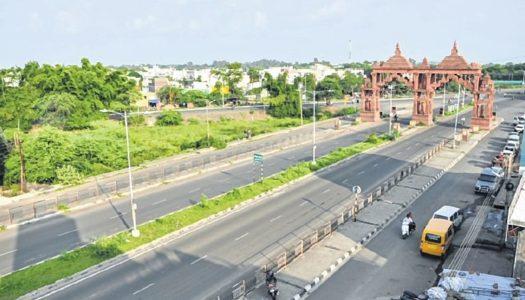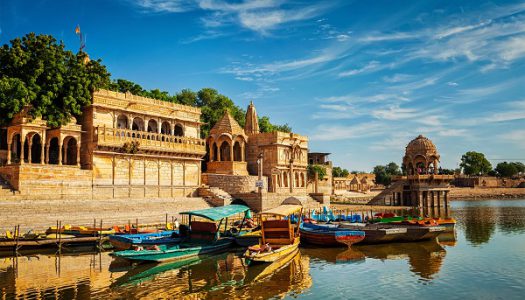India has only been united since 1947. Until then, several kings ruled different regions, building palaces, monuments, temples and much else. Of all they built, UNESCO has named 38 sites to their list of world heritage places. From palaces to forts, temples, churches and monuments, the list includes 30 cultural sites, 1 site under mixed criteria and 7 natural sites. Let’s take a look at the top 21 most stunning UNESCO heritage sites in India.
Cultural World Heritage Sites in India
- Agra Fort (1983)
- Ajanta Caves (1983)
- Archaeological Site of Nalanda Mahavihara at Nalanda, Bihar (2016)
- Buddhist Monuments at Sanchi (1989)
- Champaner-Pavagadh Archaeological Park (2004)
- Chhatrapati Shivaji Terminus (formerly Victoria Terminus) (2004)
- Churches and Convents of Goa (1986)
- Elephanta Caves (1987)
- Ellora Caves (1983)
- Fatehpur Sikri (1986)
- Great Living Chola Temples (1987,2004)
- Group of Monuments at Hampi (1986)
- Group of Monuments at Mahabalipuram (1984)
- Group of Monuments at Pattadakal (1987)
- Hill Forts of Rajasthan (2013)
- Historic City of Ahmadabad (2017)
- Humayun’s Tomb, Delhi (1993)
- Jaipur City, Rajasthan (2019)
- Khajuraho Group of Monuments (1986)
- Mahabodhi Temple Complex at Bodh Gaya (2002)
- Mountain Railways of India (1999,2005,2008)
- Qutb Minar and its Monuments, Delhi (1993)
- Rani-ki-Vav (the Queen’s Stepwell) at Patan, Gujarat (2014)
- Red Fort Complex (2007)
- Rock Shelters of Bhimbetka (2003)
- Sun Temple, Konârak (1984)
- Taj Mahal (1983)
- The Architectural Work of Le Corbusier, an Outstanding Contribution to the Modern Movement (2016)
- The Jantar Mantar, Jaipur (2010)
- Victorian Gothic and Art Deco Ensembles of Mumbai (2018)
Natural World Heritage Sites in India
- Kaziranga Wild Life Sanctuary, Assam
- Sundarbans National Park, West Bengal
- Great Himalayan National Park, Himachal Pradesh
- Manas Wild Life Sanctuary, Assam
- Keoladeo National Park, Bharatpur, Rajasthan
- Nanda Devi and Valley of Flowers National Parks, Uttarakhand
- Western Ghats
Mixed World Heritage Site in India
- Khangchendzonga National Park
UNESCO World Heritage Sites in North India
1. Red Fort
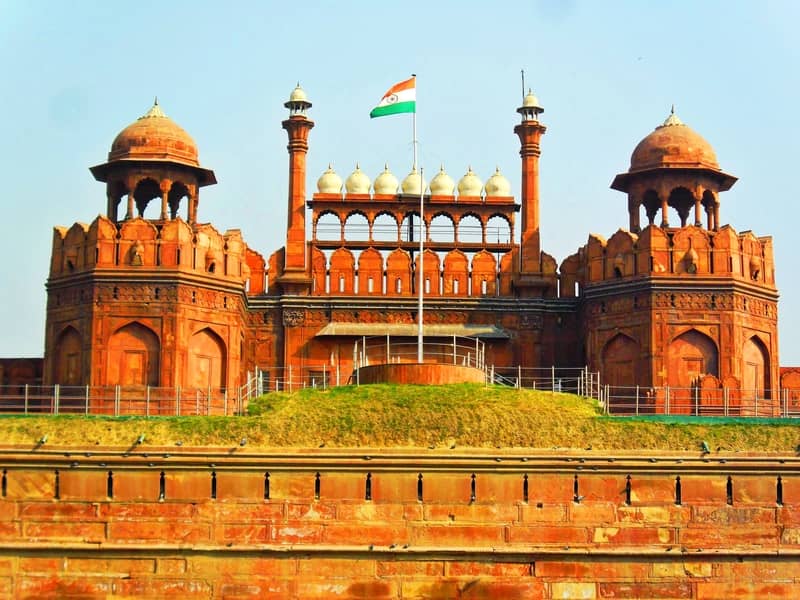
Built by Shahjahan in the 17th century, the Red Fort or Lal Quila is an important landmark in Delhi. The fort is believed to be the high-point of the Mughal empire. Today, the Prime Minister delivers his annual Independence Day speech from the Red Fort in Delhi.
- Location: Delhi
- Declared as a world heritage site in the year: 2007
2. Humayun’s Tomb
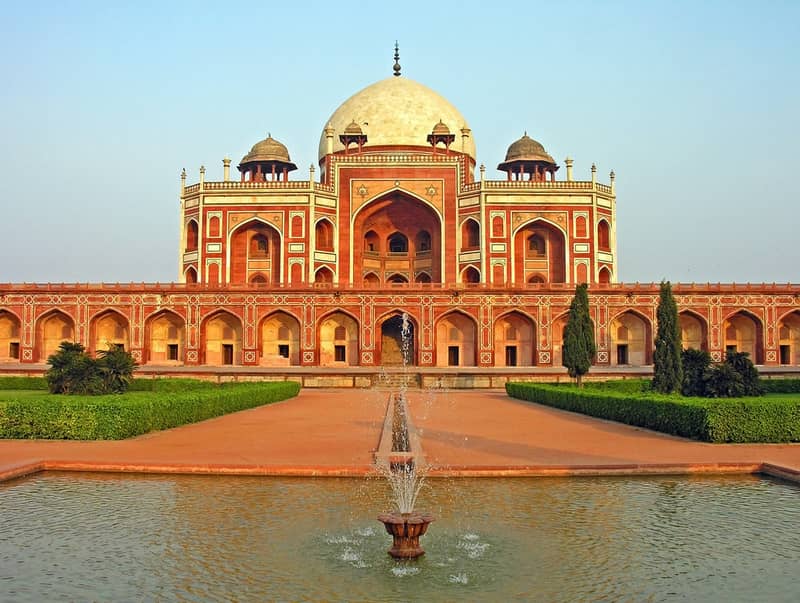
A marvellous structure, the exterior of the tomb married Mughal and Persian architectural styles. Humayun’s Tomb is one of the few structures on this list that lacks decorative exteriors; its facade is fairly simple. On the tomb, you will notice arches, a large dome, made entirely of marble, and several pillars.
- Location: Delhi
- Declared a World Heritage Site in the year: 1993
3. Qutub Minar
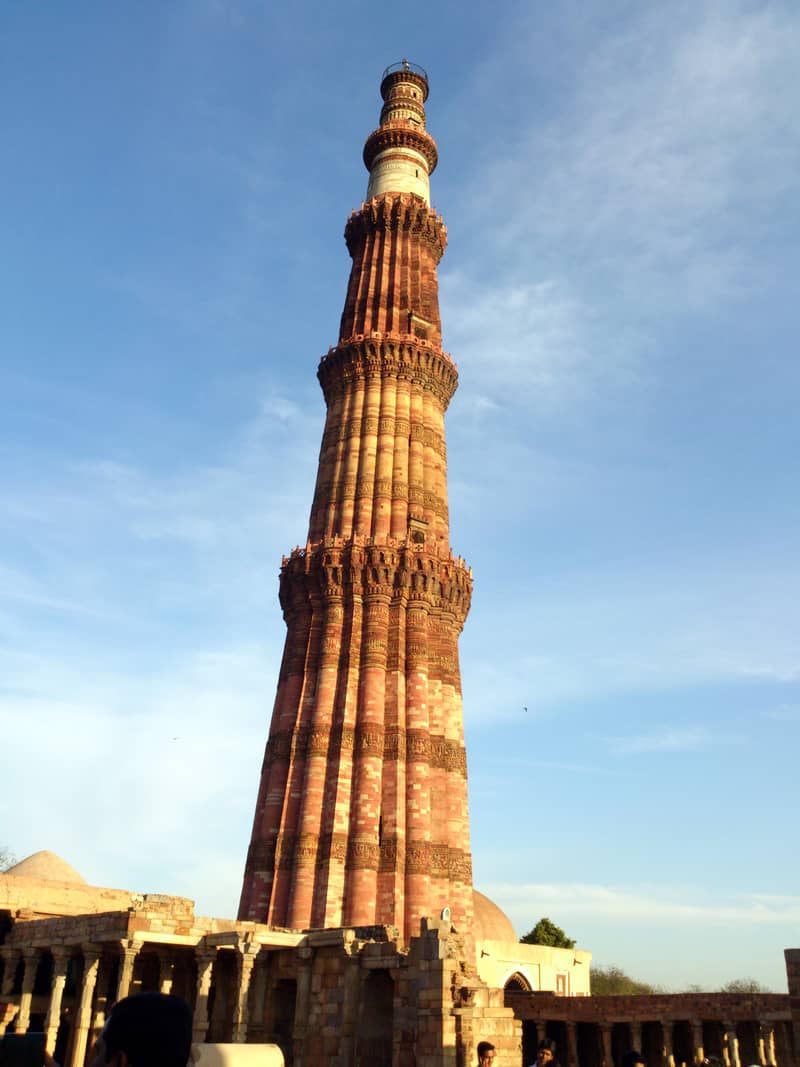
The Qutub Minar is a towering structure that sits in the centre of the Qutub complex in Delhi. This gorgeous structure was built by Sultan Qutb-ud-din to proclaim his victory over the ruler of Qila Rai Pithora. Do not forget to catch a glimpse of verses from the Quran on each band of the five-storey tower.
- Location: Delhi
- Declared a World Heritage Site in the year: 1993
4. Jantar Mantar, Jaipur
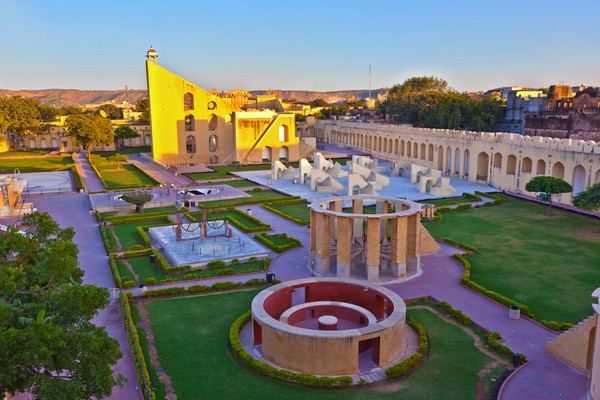
Constructed in the 18th century, Jantar Mantar in Jaipur is an astronomical observatory which has 19 man-made astronomical instruments including the largest stone Sundial. This was created during the reign of Raja Sawai Jai Singh II to understand the celestial coordinate system, elliptical system and equatorial system.
Jantar Mantar derives its name from the Sanskrit language and literally means calculating instrument.
- Location: Jaipur
- Declared a World Heritage Site in the year: 2010
5. Agra Fort
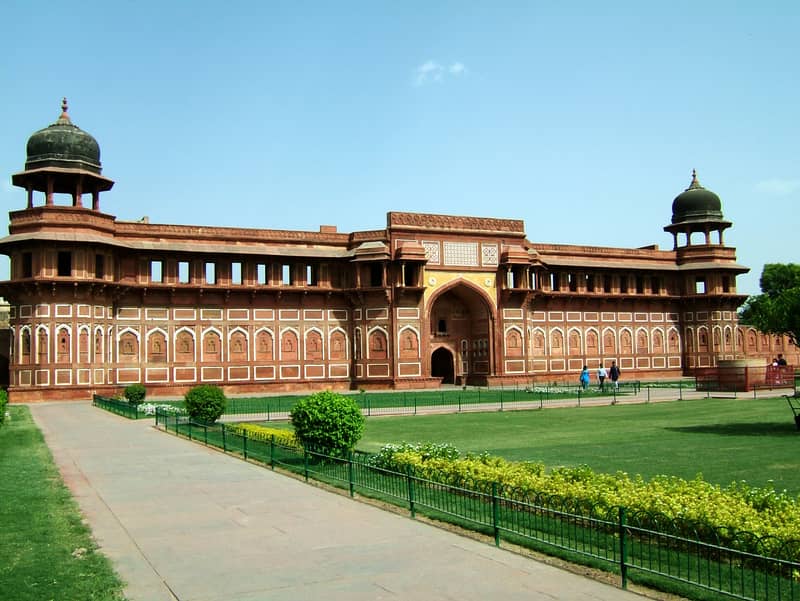
While its neighbour the Taj Mahal might be the crown jewel, you cannot take away the fact that the Agra Fort is a magnificent piece of architecture. Walk around the fort’s courtyard to know why.
The only entry to the fort is via the Amar Gate; most parts of the fort are restricted. Still, the public section of the Agra Fort provides you with the chance to see the excellent artwork and stunning Mughal designs.
- Location: Uttar Pradesh
- Declared a World Heritage Site in the year: 1983
6. Taj Mahal
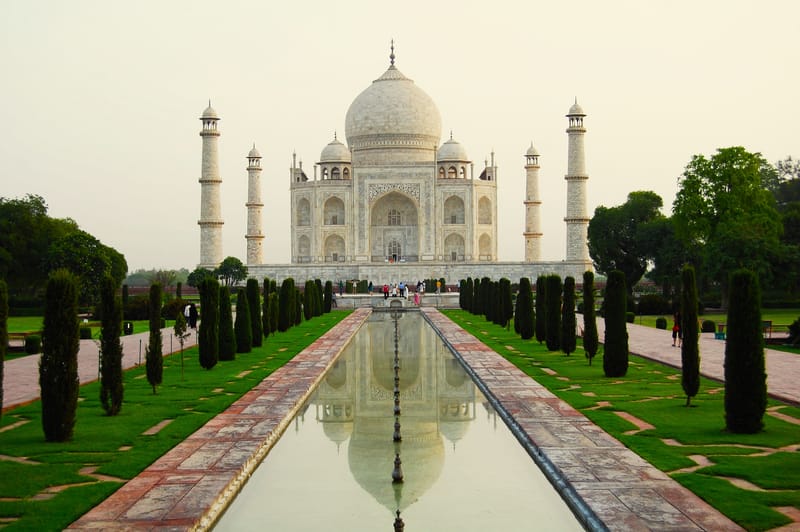
The Taj Mahal is the queen of all monuments and structures in India. It was built by Shah Jahan as a memorial of his wife Mumtaz Mahal. The structure, made entirely of marble and gemstones, will leave you awe-struck and is a must-visit site for anyone travelling to India.
- Location: Uttar Pradesh
- Declared a World Heritage Site in the year: 1983
7. Fatehpur Sikri
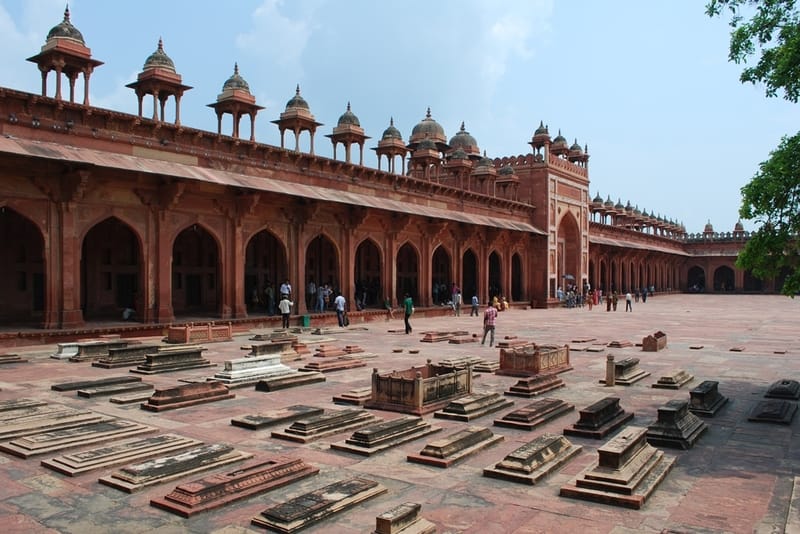
Fatehpur Sikri is a bastioned city located a few miles away from Agra. It has been granted the title of a UNESCO world heritage site and was for the former capital of the Mughal empire. The best place to visit in this UNESCO heritage city is the stunning mosque that still stands tall today.
- Location: Uttar Pradesh
- Declared a World Heritage Site in the year: 1986
8. Mountain Railways of India
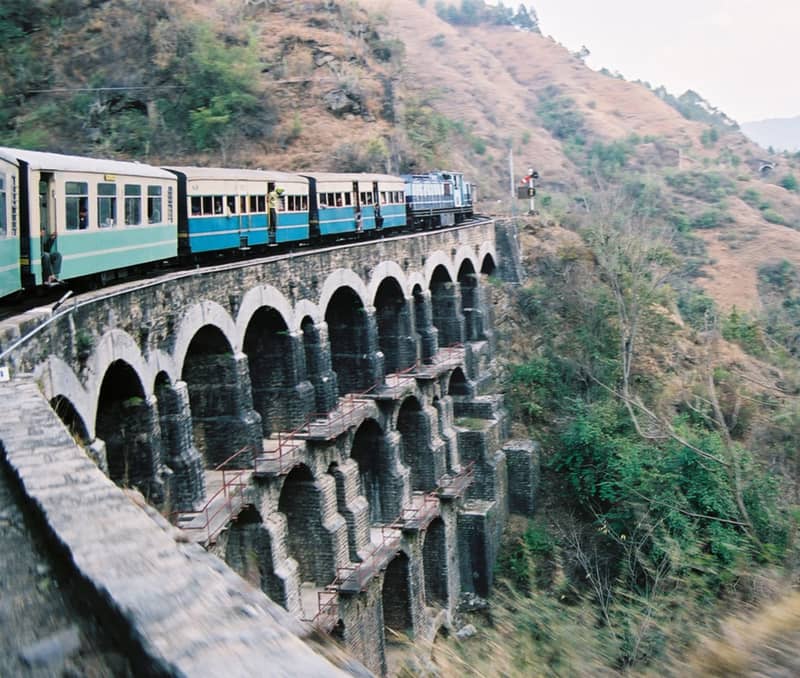
The Kalka–Shimla Railway, the Darjeeling Himalayan Railway and the Nilgiri Mountain Railway make up the Mountain Railways of India UNESCO Heritage Site. All the three railways were laid and opened between 1881 and 1908 and are a truly marvellous piece of engineering in India.
The outstanding example set by the Indian Railways by constructing rail lines through rough and rugged terrain earned the project entry into the UNESCO Heritage list.
- Location: Himachal Pradesh
- Declared a World Heritage Site in the year: 1999, 2005 and 2008
9. Manas Wildlife Sanctuary
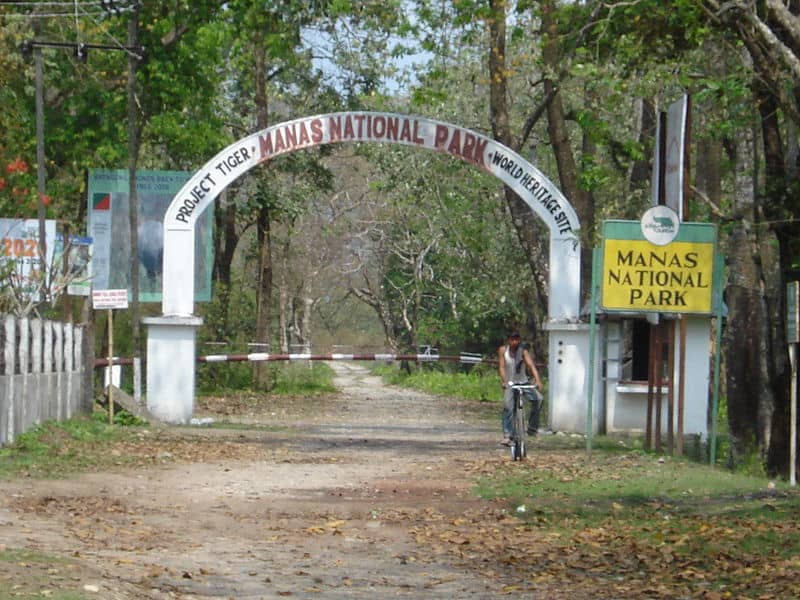
The Manas Wildlife Sanctuary is a UNESCO listed site and is home to threatened wildlife like the Bengal Tiger, wild buffaloes, one-horned rhino, swamp deer, clouded leopards and the sloth bear.
A highly secure area, entry is allowed only if you book a licensed tour guide. Jeep tours are the best way to explore the wildlife sanctuary. Manas Wildlife Sanctuary is known both for its rich biodiversity and its beautiful landscape.
- Location: Assam
- Declared a World Heritage Site in the year: 1985
10. Kaziranga National Park
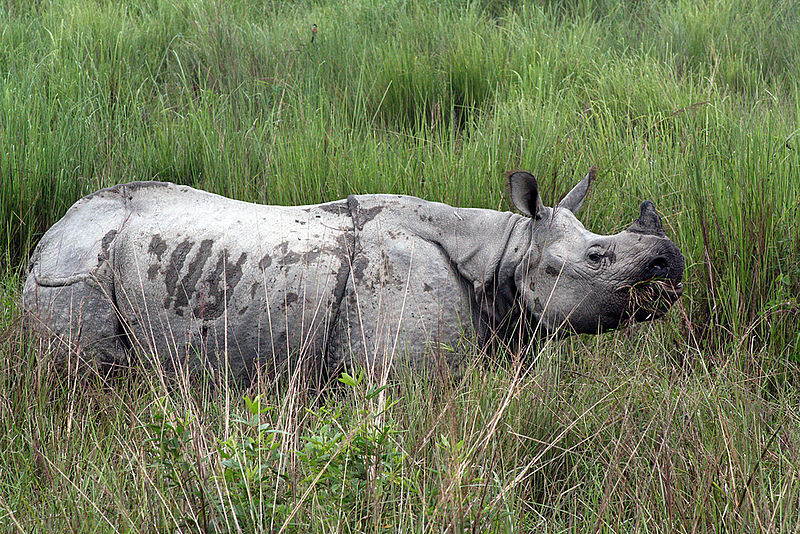
The Kaziranga Park is a grassland famous for being the home of the one-horn Rhinoceros, India’s best-known species of wild animals. The highlight at the park is the elephant safari in the central range of the forest. It is one of the most beautiful and finest national parks in India and is also well-known for conserving and maintaining a single largest population of the one-horned Rhinos in the country. Other species found in the park include elephants, tigers, wild water buffaloes and aquatic species like Ganges River Dolphin.
- Location: Assam
- Declared a World Heritage Site in the year: 1985
UNESCO Heritage Sites in Central India
1. Khajuraho Group of Monuments
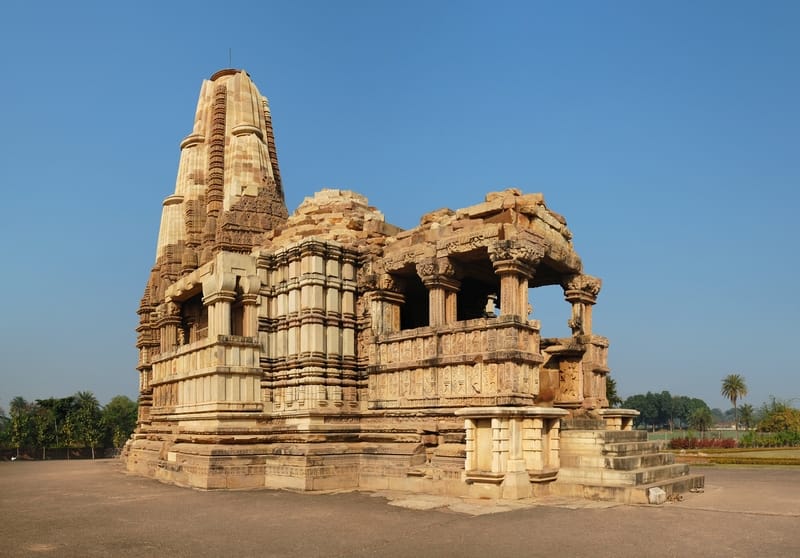
The Khajuraho Group of Monuments consist mainly of the temple with stunning architecture. Temples in Khajuraho are famous for their erotic depictions. These temples were built during the Chandella Dynasty and belong to two religions, namely Hinduism and Jainism.
The site earned itself a UNESCO heritage tag because of its stunning artwork. Visit the place to check out the finest temple artwork in the world.
- Location: Madhya Pradesh
- Declared a World Heritage Site in the year: 1986
2. Buddhist Monuments at Sanchi
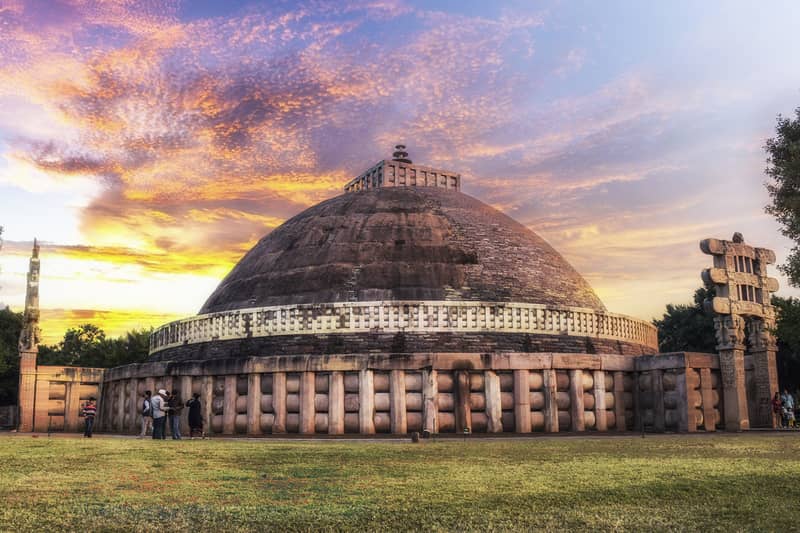
Located on a hill in Madhya Pradesh the famous Great Stupa lies at the Sanchi’s World Heritage site. The structures and stupas were constructed by King Ashoka. Once forgotten, today the place is revered as a must-visit site for all tourists and art lovers. On e can see the Buddhist monuments that include monasteries, palaces, temples and monolithic pillars at Sanchi, and these structures date back to the 1st and 2nd century BC.
- Location: Madhya Pradesh
- Declared a World Heritage Site in the year: 1989
UNESCO Heritage Sites in Western India
1. Chhatrapati Shivaji Terminus
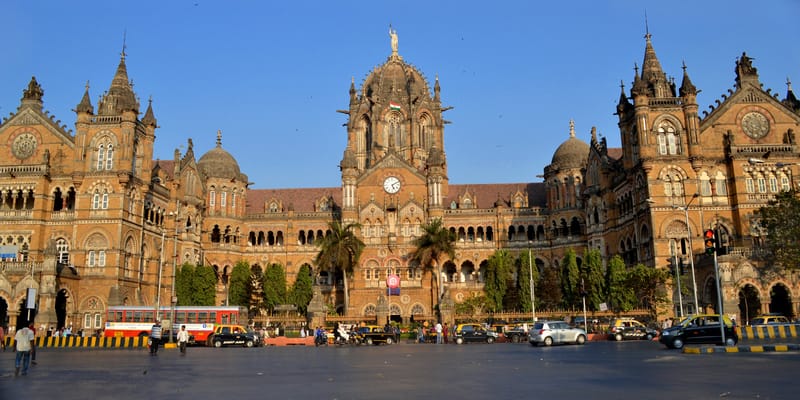
Situated in South Mumbai, the CST Railway station has an imposing Victorian-Gothic structure. Some portions of the structure have Hindu and Islamic architectural styles. Don’t forget to spot the gorgeous stained glasses and spires on the outer structure. It was previously known as Victoria Terminus and was designed by the British architect FW Stevens.
- Location: Mumbai
- Declared a World Heritage Site in the year: 2004
2. Elephanta Caves
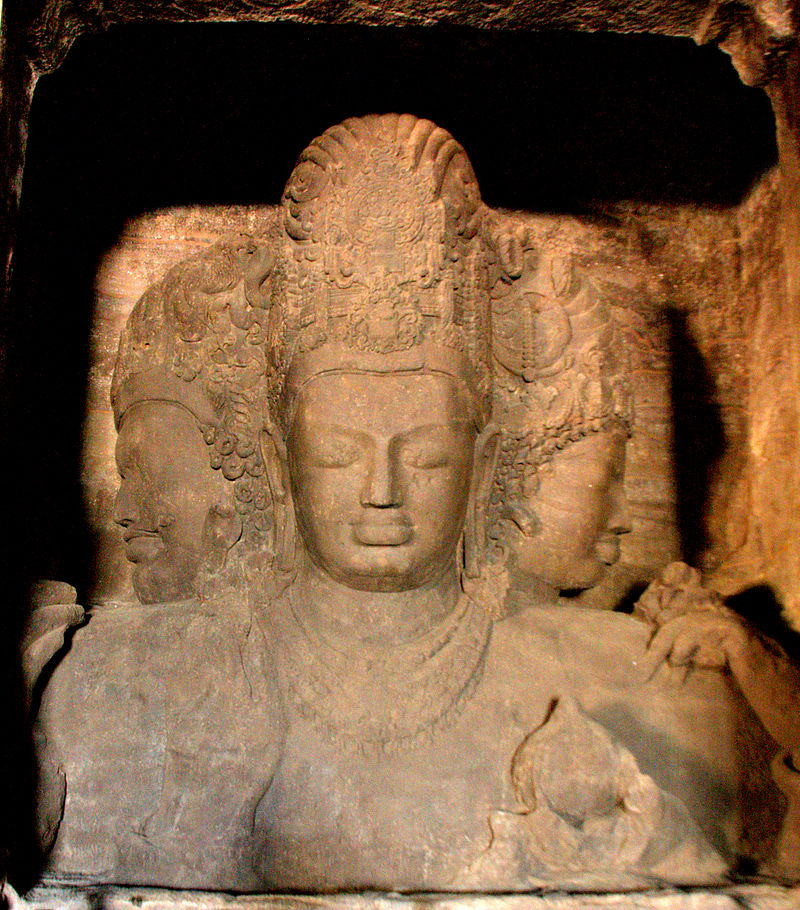
The caves at the Elephanta island contain some of the most impressive temple carvings in all of India. Believed to be constructed between 450 and 750 AD, these caves are located to the North East of the Gateway of India.
The stand out temple is the main Shiva temple that has fascinating latticework and a seven-metre tall statue of Sadhashiva at the entrance. The caves depict Shiva in 3 different forms – The Creator, Preserver and Destroyer.
- Location: Maharashtra
- Declared a World Heritage Site in the year: 1987
3. Ellora Caves
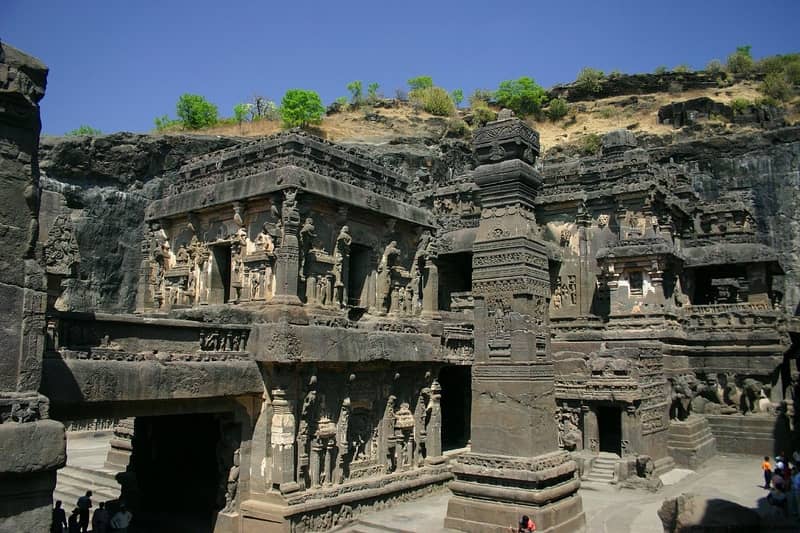
The story behind the art at the Ellora caves will make you swoon with awe. It is said that sculptors who were Jain, Hindu and Buddhists monks took five centuries to complete carving the temple. Located near Aurangabad, these caves are a UNESCO and heritage site.
- Location: Ellora, Maharashtra
- Declared a World Heritage Site in the year: 1983
4. Ajanta Caves
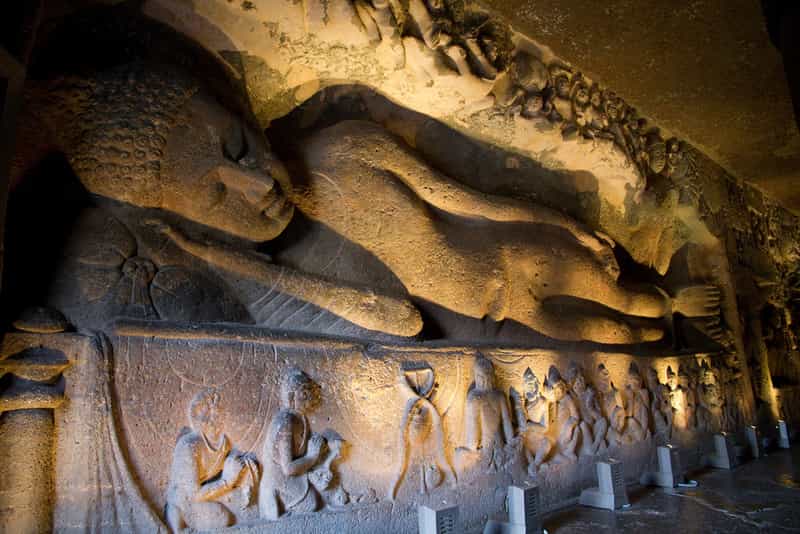
Ajanta Caves are home to 2nd and 1st century BC Bushhist paintings and statues that are considered masterpieces of the Buddhist religion. The caves have a total of 31 rock-cut monuments, paintings and sculptures that depict the life of Buddha and more artistically decorated caves added to the existing ones in the 5th and 6th centuries, during the Gupta Era.
- Location: Maharashtra
- Declared a World Heritage Site in the year: 1983
5. Churches and Convents of Goa
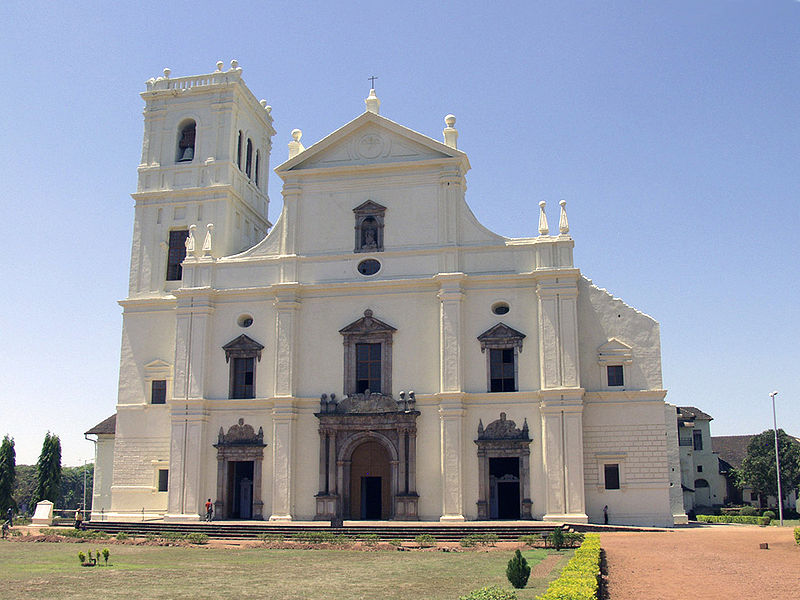
The Old Goa Church Complex is a UNESCO World Heritage Site that is a must-visit for all tourists, especially those who love architecture. The churches date back over 200 years and have beautiful exteriors.
A must visit is the Bom Jesu Church that houses the mortal remains of Goa’s patron saint, Francis Xavier. Tours are available at the church complex.
- Location: Goa
- Declared a World Heritage Site in the year: 1986
UNESCO Heritage Sites in South India
1. Hampi
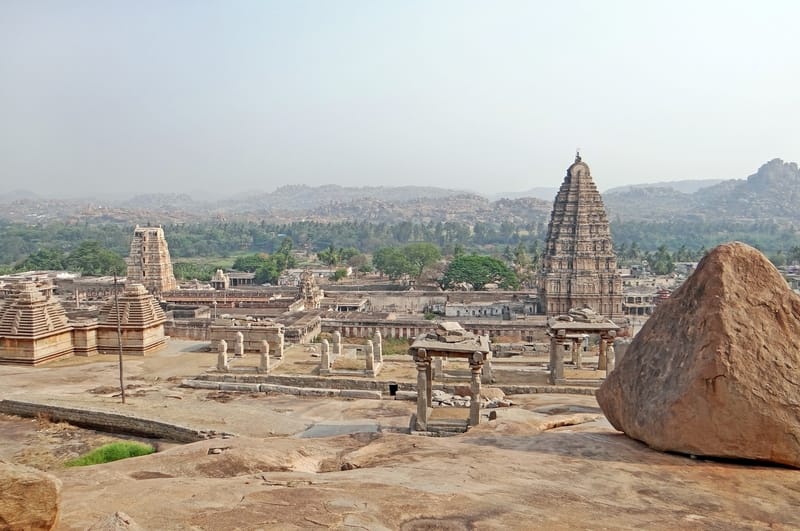
When you visit Hampi, you are welcomed to vast open spaces of ruins and rocks. Surrounded by paddy fields and palm trees, the site of the ruins of Hampi have been listed on UNESCO’s World Heritage list and with good reason. Hampi has temples, stone chariots that are marvellously carved and built out of stone.
- Location: Karnataka
- Declared a World Heritage Site in the year: 1986
2. Pattadakal
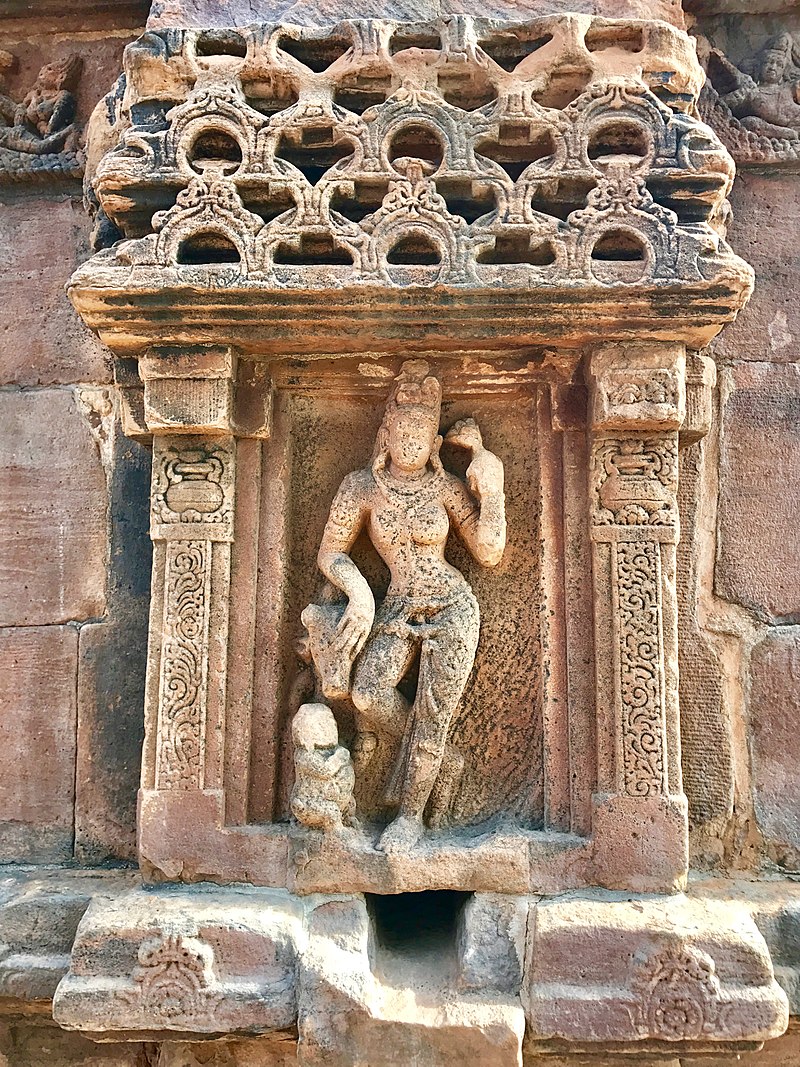
The Pattadakal Jain and Hindu temples are world-renowned and UNESCO World Heritage sites. Tourists visit these temples for a close-up view of beautiful carvings and intricate artwork. The best way to get to Pattadakal is via Badami.
- Location: Karnataka
- Declared a World Heritage Site in the year: 1987
3. Great Chola Temples
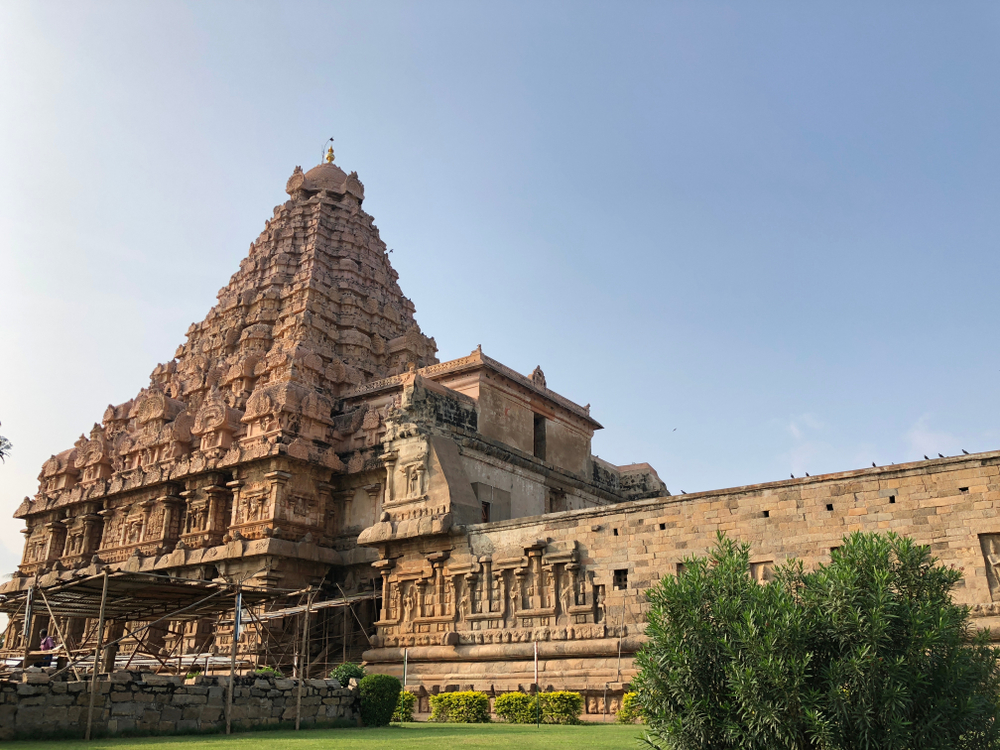
The Tanjore Brihadeeshwara Temple was built by Raja Raja Chola I and is one of the largest temples in South India. The temple is resplendent of Dravidian architecture. The Gangaikonda Cholapuram temple or Brihadeeshwara temple along with Airavatesvara temple are recognized as UNESCO Wolrd Heritage Site under the category of Great Living Chola Temples.
- Location: Tamil Nadu
- Declared a World Heritage Site in the year: 1987, 2004
4. Monuments in Mahabalipuram
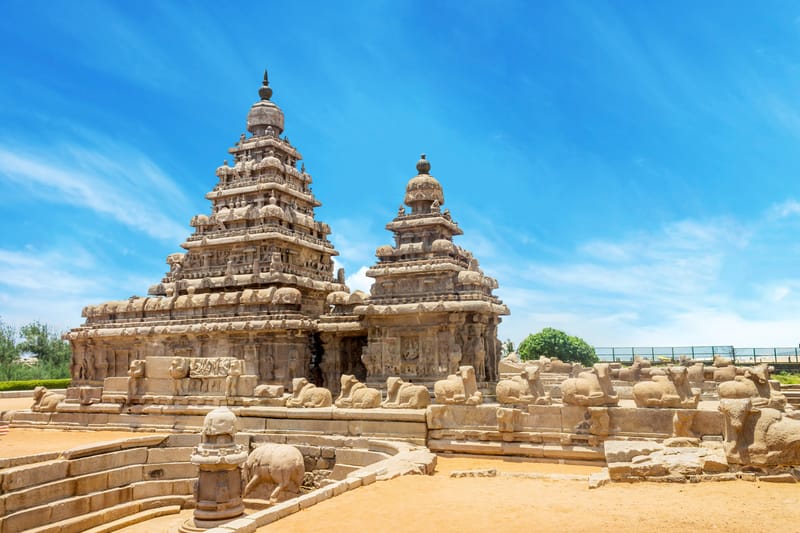
Founded during the Pallava Period, the temples, pillars, chariots and other sculptures in Mahabalipuram are also recognized as the UNESCO World Heritage Site in South India. All the structures date back to 7th and 8th-century CE and also include the largest rock-relief – Aruna’s Penance or the Descent of Ganges.
- Location: Tamil Nadu
- Declared a World Heritage Site in the year: 1984
Besides being famous, these 21 places have a rich historical background. We would highly recommend reading a book to know more about its background or hiring a tour guide while at any of these places. Want to know more? Do let us know in the comments section.
Further Read
- All you need to know about Sundarbans National Park
- The 12 Most Stunning Monuments in Hampi
- Amazing National Parks in India You Should Visit
- The 13 Best Jungle Safaris in India

















